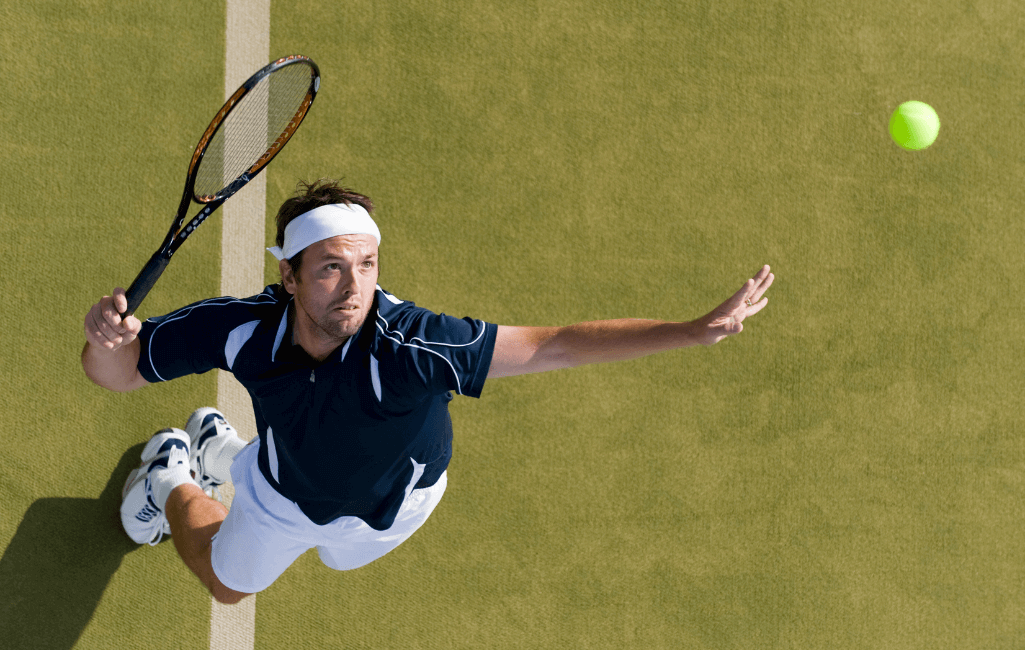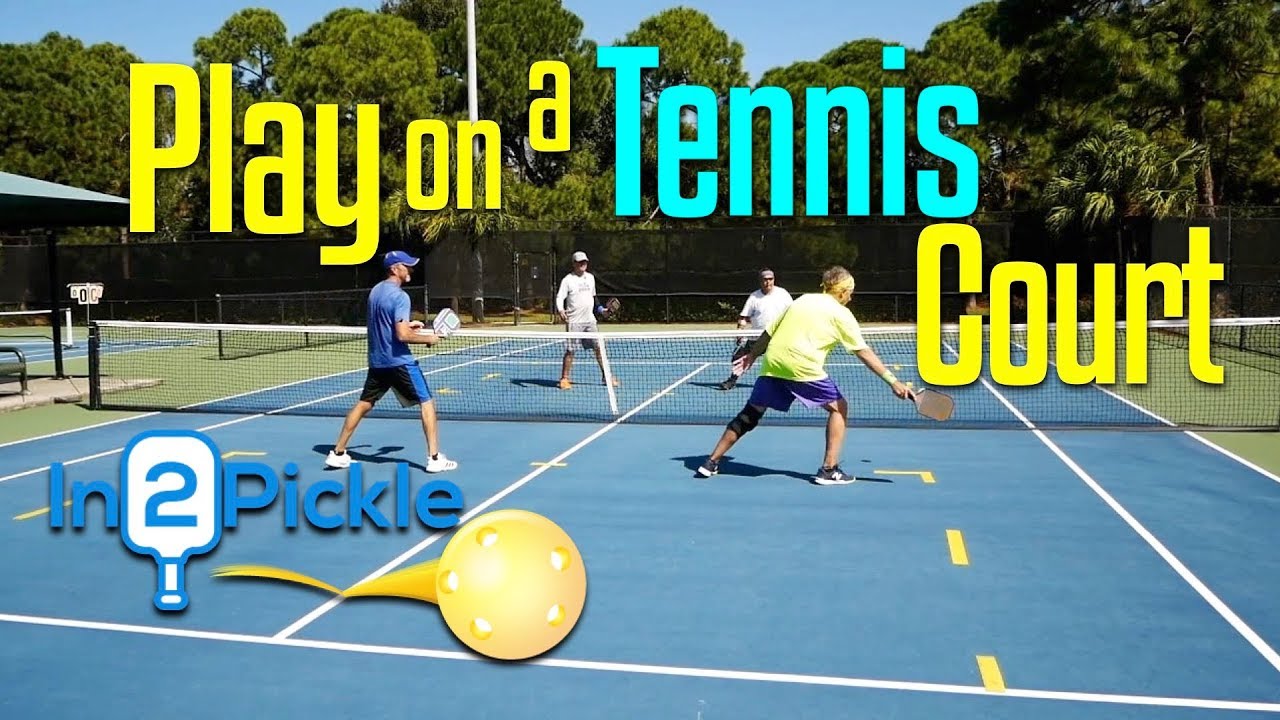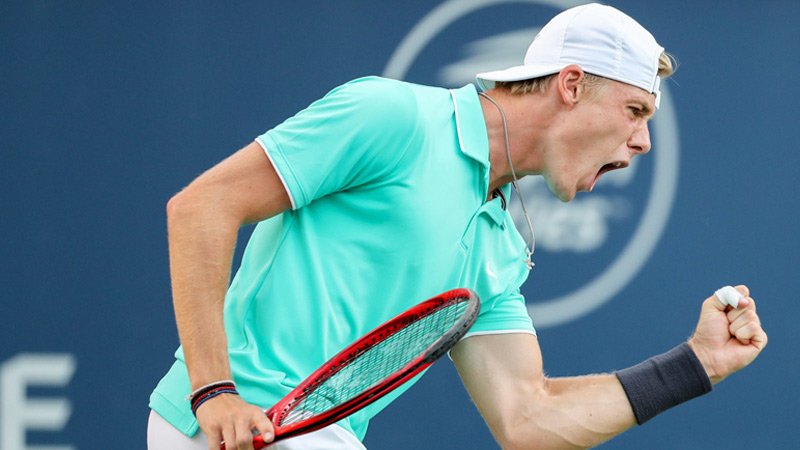Is Tennis a Hard Sport? Unlocking the Power and Grit Behind the Game
Yes, tennis is a challenging sport that requires physical stamina and mental agility. It demands quick reflexes, strategic thinking, and precise hand-eye coordination.
Playing tennis is no easy feat. It is a physically demanding sport that requires players to possess a high level of physical fitness and stamina. Additionally, tennis requires players to have quick reflexes and agility, as they need to react rapidly to the ball and move swiftly across the court.
Mental strength and strategic thinking are also essential in tennis, as players must make split-second decisions and anticipate their opponent’s moves. Furthermore, precise hand-eye coordination is crucial for accurately hitting the ball and controlling its direction and speed. Tennis is indeed a hard sport that tests both the physical and mental capabilities of its players.

Challenging Physical Demands Of Tennis
Tennis is undoubtedly a challenging sport, demanding both physical agility and mental prowess. With its fast-paced rallies, quick changes in direction, and powerful shots, tennis presents a formidable test of athleticism, making it a hard sport to master.
Tennis is a sport that requires a great deal of physical skill, agility, and endurance. Players must possess the ability to quickly react and respond to fast-paced gameplay, as well as the strength and power to execute powerful shots. In this blog post, we will delve into the challenging physical demands of tennis and explore the different aspects that make it such a hard sport to excel in.
Conditioning For Endurance And Stamina:
- Tennis matches can last for hours, requiring players to have exceptional endurance and stamina.
- Building endurance involves consistent training and conditioning. This can be achieved through activities such as long-distance runs, interval training, and cycling.
- Players must have the capacity to chase down every shot and still maintain their performance throughout the entirety of a match.
Agility And Quick Reflexes:
- Tennis is a game of split-second decisions and lightning-fast movements. Agility and quick reflexes are crucial in order to anticipate and react to shots effectively.
- Agility can be improved through drills that focus on lateral movements, quick changes of direction, and footwork exercises.
- Quick reflexes are developed through specific training exercises that simulate game situations and emphasize reaction time.
Explosive Power And Strength:
- The ability to generate explosive power and strength is essential in tennis.
- Players rely on powerful serves and shots to gain an advantage over their opponents.
- Developing explosive power can be achieved through strength training exercises such as plyometrics, medicine ball throws, and Olympic lifts.
- Strength training is also crucial to help prevent injuries and maintain overall physical fitness.
Tennis is undoubtedly a hard sport due to its challenging physical demands. Conditioning for endurance and stamina, agility and quick reflexes, as well as explosive power and strength, are crucial factors that contribute to success on the court. Players must invest time and effort into training their bodies to meet these demands in order to excel in this highly competitive sport.
Mental Toughness In Tennis
Tennis requires mental toughness and resilience in every aspect of the game, making it a challenging sport. Players must maintain focus, handle pressure, and quickly adapt to changing situations on the court. With strategic thinking and intense concentration, tennis players overcome their opponents and succeed in this demanding sport.
Tennis is not just physically demanding; it also requires immense mental toughness. The psychological battle that unfolds on the court can make or break a player’s performance. Let’s explore the key aspects of mental strength in tennis, from the psychological battle players face to techniques for overcoming pressure and stress.
The Psychological Battle On The Court
The mind plays a crucial role in tennis, affecting an athlete’s performance and decision-making abilities. Here are some of the mental challenges players often encounter on the court:
- Self-doubt: Doubting one’s abilities can disrupt focus and lead to unforced errors.
- Concentration: Maintaining a high level of focus throughout a match can be difficult, especially when distractions abound.
- Emotional control: Managing emotions like frustration, anger, or anxiety is crucial to prevent them from affecting performance.
- Mental resilience: Bouncing back from setbacks and staying motivated is essential for long matches or tough opponents.
Developing Resilience And Focus
To excel in tennis, players must develop mental resilience and focus. Here are some strategies to hone these skills:
- Mindfulness techniques: Adopting mindfulness practices, such as deep breathing or visualization, can help players stay present and focused.
- Positive self-talk: Encouraging oneself with positive affirmations helps build confidence and maintain focus during challenging moments.
- Mental rehearsal: Imagining successful plays and scenarios can boost confidence and prepare the mind for real-life situations.
- Goal setting: Setting realistic and achievable goals helps maintain motivation and gives players a sense of direction.
Strategies For Overcoming Pressure And Stress
Pressure and stress are common in tennis, especially during intense matches or crucial points. Here are some strategies to handle these challenges effectively:
- Controlled breathing: Deep breaths can help calm the mind, reduce anxiety, and improve focus during tense moments.
- Rituals and routines: Developing pre-serve or pre-shot rituals can provide a sense of control and help players stay focused.
- Positive visualization: Imagining successful outcomes and visualizing oneself performing well can boost confidence and alleviate pressure.
- Adapting to adversity: Adopting a flexible mindset and quickly adapting to changing circumstances helps overcome stress and maintain composure.
Mental toughness is a crucial aspect of tennis. Players must navigate the psychological battle on the court, develop resilience and focus, and master strategies to overcome pressure and stress. By honing their mental strength, tennis players can enhance their performance and elevate their game to new heights.
Technical Skills Required In Tennis
Tennis requires a range of technical skills, making it a challenging sport. Players must master techniques such as serving, volleying, and executing different strokes with precision and control. With practice and dedication, players can improve their skills and excel in the game.
Tennis is a sport that requires a combination of physical and mental skills. Many people wonder if tennis is a hard sport, and the answer lies in the technical skills required to excel on the court. In this section, we will explore the key technical skills that players need to master in order to succeed in tennis.
Mastering The Fundamental Shots
To become proficient in tennis, players must master the fundamental shots that form the foundation of the game. These shots include:
- Forehand: The forehand shot is executed with the dominant hand, using a swinging motion. It requires good hand-eye coordination and proper body positioning to generate power and accuracy.
- Backhand: The backhand shot is performed with the non-dominant hand. Players must develop the strength and coordination necessary to execute this shot effectively.
- Serve: The serve is initiated at the beginning of each point. It requires a combination of power, accuracy, and spin to gain an advantage over the opponent.
- Volley: The volley is a shot that is hit before the ball bounces. It demands quick reflexes, hand-eye coordination, and the ability to control the direction and pace of the shot.
These fundamental shots lay the groundwork for a player’s tennis skills, and mastering them is essential for success on the court.
Precision And Control
In addition to mastering the fundamental shots, precision, and control are crucial in tennis. Players must have the ability to place the ball accurately within the court, adjust their shot selection based on the opponent’s positioning, and hit with consistency.
This requires skillful footwork, proper timing, and a keen sense of spatial awareness.
- Placement: Being able to hit the ball where you want it to go is crucial in tennis. Players need to develop the ability to direct their shots to specific areas of the court, such as the corners or sidelines, to exploit their opponent’s weaknesses.
- Shot consistency: Consistency in tennis is key to maintaining control over the point. Players must strive to hit the ball consistently and avoid making unforced errors.
- Footwork: Good footwork allows players to get in the right position to execute their shots effectively. It involves quick movement, balance, and the ability to adjust to different shot angles and speeds.
Tactical Awareness And Shot Selection
Another important aspect of tennis is tactical awareness and shot selection. Players must develop a strategic approach to the game, analyzing their opponent’s strengths and weaknesses, and making intelligent decisions about shot selection.
- Strategy: Tennis players need to develop a game plan and adjust their strategy based on the situation. This includes deciding whether to play aggressively or defensively, changing the pace and spin of the ball, and exploiting openings in the opponent’s game.
- Anticipation: Anticipating the opponent’s shot and understanding their patterns can give a player an edge in tennis. This allows them to prepare for the shot in advance and make more informed decisions about their own shot selection.
- Decision-making: In tennis, players must make split-second decisions about which shot to play in any given situation. This requires the ability to assess the court position, anticipate the opponent’s shot, and execute the appropriate response.
Tennis is a challenging sport that requires a combination of technical skills, precision and control, and tactical awareness. By mastering the fundamental shots, developing precision and control, and making intelligent decisions about shot selection, players can excel on the tennis court.
So, are you ready to take up the challenge and improve your skills in this exciting sport? It’s time to grab your racket and start playing!
The Importance Of Strategy And Game Planning
Strategy and game planning are crucial in tennis as it is a challenging sport. By carefully strategizing and planning their moves, players can optimize their performance and outsmart their opponents, ultimately increasing their chances of success on the court.
Tennis is a sport that requires more than just physical skills. It also demands strategic thinking and effective game planning. A player needs to analyze their opponents, devise winning serving and returning strategies, and adjust their game according to different court surfaces and conditions.
Let’s delve into the importance of strategy and game planning in tennis.
Analyzing Opponents And Their Playing Styles:
Understanding your opponent’s strengths and weaknesses is key to gaining an advantage on the tennis court. Here are some aspects to consider when analyzing your opponents:
- Playing styles: Identify whether your opponent is an aggressive baseliner, a serve-and-volley player, or a counterpuncher. This knowledge helps you anticipate their shots and develop counter-strategies.
- Shot preferences: Take note of their preferred shots, such as forehand or backhand, to exploit any weaknesses or exploit patterns.
- Patterns and tendencies: Observe their recurring shot patterns, serving tendencies, and stances to predict their next move, enabling you to position yourself strategically.
Effective Serve And Return Strategies:
Serving and returning serve are crucial aspects of tennis that require strategic planning. Consider the following elements when formulating effective strategies:
- Serving: Develop a varied and consistent service game by incorporating a mix of powerful first serves, and well-placed second serves, and exploiting your opponent’s weaknesses. By analyzing your opponent’s return tendencies, you can exploit their vulnerabilities.
- Returning serve: Focus on reading your opponent’s serve, adjusting your positioning, and utilizing techniques such as aggressive returns or well-placed slices to unsettle their game. Adapt your return strategy based on their serve speed, trajectory, and spin.
- Keeping opponents off balance: Introduce strategic serve and return variations to confuse opponents, reduce predictability, and maintain the upper hand throughout the match.
Adapting To Different Court Surfaces And Conditions:
Tennis is played on a variety of court surfaces, including clay, grass, and hard court. Additionally, weather conditions can significantly impact the game. Here’s how to adapt your game accordingly:
- Clay courts: On clay courts, players often need to employ baseline play, sliding movements, high topspin shots, and patience to outlast opponents in longer rallies.
- Grass courts: Grass courts reward aggressive play with quick serves, well-timed volleys, and exploiting the low bounce. Players need to adjust their footwork and maintain balance due to the faster surface.
- Hard courts: Hard courts offer a medium-paced surface, requiring all-round skills, including powerful shots, court coverage, and adaptability to different playing styles. Adjusting to the pace and ball bounce is vital.
- Weather conditions: Adapt your game plan according to weather conditions, such as gusty winds, extreme heat, or dampness. Use techniques like adjusting shot placement, adding more topspin, or conserving energy during adverse weather.
Tennis is much more than hitting a ball back and forth. Strategy and game planning are essential to gain an edge over opponents. By analyzing opponents’ playing styles, utilizing effective serve and return strategies, and adapting to different court surfaces and conditions, players can enhance their performance and increase their chances of victory.
So, the next time you step onto the tennis court, remember the importance of strategy and game planning in this challenging sport!
Injury Risks In Tennis
Tennis poses significant injury risks due to its intense nature, requiring players to sprint, change directions, and hit powerful shots. Joint strains, muscle tears, and overuse injuries are common in this demanding sport.
Tennis, a beloved sport played by millions around the world, offers a thrilling mix of physicality, strategy, and mental strength. As with any sport, it does come with its fair share of challenges and risks. In this section, we will explore the potential for injury in tennis and how players can minimize these risks through preventive measures and proper training techniques.
Common Tennis Injuries And Preventive Measures:
Tennis requires swift movements, quick reflexes, and repetitive motions, making players susceptible to certain injuries. Here are some common tennis injuries and the preventive measures that can help players stay on top of their game:
- Tennis Elbow: A common ailment among tennis players, tennis elbow occurs due to the repetitive motion of the arm during strokes. To prevent this injury, players should:
- Warm up properly before matches or practices.
- Strengthen their forearm muscles through exercises.
- Use proper technique and grip during strokes to alleviate stress on the elbow joint.
- Shoulder Injuries: The intense overhead movements in tennis can lead to shoulder injuries. To minimize the risk of such injuries, players should:
- Focus on strengthening the rotator cuff muscles through targeted exercises.
- Practice proper serving and overhead stroke techniques to avoid unnecessary strain on the shoulder.
- Allow enough rest and recovery time between matches or training sessions.
- Ankle Sprains: The quick lateral movements on the court can put strain on the ankles, leading to sprains. Players can reduce the likelihood of ankle sprains by:
- Wearing supportive tennis shoes with sufficient ankle stability.
- Maintaining good overall strength and flexibility through regular conditioning exercises.
- Practicing balance and agility drills to enhance stability and proprioception.
Overuse And Repetitive Stress Injuries:
Overuse and repetitive stress injuries are also common among tennis players, often resulting from excessive strain on certain body parts. To address these injuries, players should:
- Manage Training Load: Balancing training and recovery is crucial to avoid overuse injuries. Players should gradually increase their training intensity and volume over time, allowing their bodies to adapt and recover adequately.
- Listen to the Body: Paying attention to any signs of discomfort or pain is essential, as it can indicate an impending injury. Players should not ignore these warning signs and should seek appropriate medical attention if necessary.
- Cross-Training: Engaging in cross-training activities can help minimize repetitive stress on specific muscle groups. Incorporating activities such as swimming, cycling, or yoga into the training routine can promote overall fitness and reduce the risk of overuse injuries.
The Role Of Conditioning And Proper Training Techniques:
To stay physically fit and prevent injuries, tennis players should focus on conditioning and proper training techniques. Here are some key aspects to consider:
- Strength and Flexibility: Regular strength training exercises can help improve muscular strength and stability, reducing the risk of injuries. Dynamic stretching before playing and static stretching after can improve flexibility and enhance performance.
- Core Stability: A strong core is crucial to maintaining proper posture, and balance, and transferring power efficiently during strokes. Including core-focused exercises in training routines can have significant benefits for players.
- Proper Technique: Learning and implementing correct stroke techniques can reduce undue stress on various body parts. Coaches or trainers can provide guidance on proper form and technique to minimize the risk of injury.
Tennis, while challenging, provides immense joy and excitement. By adopting preventive measures and focusing on proper training techniques, players can optimize their performance and enjoy the sport while reducing the likelihood of injuries. So, grab your racket, hit the court, and make the most of your tennis journey!
*Remember, injuries can happen in any sport. If you experience pain or discomfort, consult a medical professional for advice and treatment. *
The Competitive Nature Of Tennis
Tennis is a challenging sport that requires physical prowess, mental resilience, and strategic thinking. Its competitive nature pushes players to push their limits, making it a demanding yet rewarding sport to master.
Tennis is a sport that brings together agility, strength, and strategic thinking in a competitive environment. With its unique blend of individual skills and team dynamics, tennis offers a challenging experience for players at all levels. In this section, we will delve into the competitive nature of tennis and explore the various aspects that make it a demanding sport.
Competing At Various Levels: Junior, Amateur, And Professional
In tennis, individuals have the opportunity to compete at different levels, each with its own set of challenges. Whether you are a junior, amateur, or professional player, the competitive landscape is filled with tests that push you to your limits.
Here are some key points to consider:
- Juniors:
- Developing skills through regular training and tournaments.
- Balancing academics and tennis commitments.
- Navigating the path to professional tennis.
- Amateurs:
- Juggling tennis with work and personal life.
- Participating in competitive leagues and local tournaments.
- Building a strong foundation for future growth.
- Professionals:
- Intense training schedules and rigorous physical conditioning.
- Competing in high-stakes tournaments worldwide.
- Dealing with the pressure of rankings and expectations.
The Challenges Of Tournaments And Rankings
Tournaments play a crucial role in the competitive aspect of tennis, providing players with opportunities to showcase their skills and climb the rankings ladder. However, these tournaments come with their own unique challenges and pressures. Here are the key points to consider:
- Intense competition:
- Facing top-ranked opponents and skilled competitors.
- Navigating the mental and physical demands of multiple matches.
- Continuously adapting strategies throughout the tournament.
- Travel and logistics:
- Balancing the demands of travel schedules and jet lag.
- Adjusting to different court surfaces and weather conditions.
- Managing recovery and preparation between tournaments.
- Rankings and pressure:
- Striving to improve rankings to gain better tournament entries.
- Coping with the expectations and scrutiny from fans, sponsors, and media.
- The constant pursuit of maintaining or advancing in the rankings.
Balancing Individual Success And Team Dynamics In Doubles
While tennis is often seen as an individual sport, doubles matches add another layer of complexity by incorporating team dynamics into the competitive equation. Here’s what you need to know about balancing individual success and teamwork in doubles:
- Collaborative strategy:
- Communication and coordination between partners during matches.
- Playing to each other’s strengths and covering weaknesses.
- Adopting different roles to optimize team performance.
- Shared responsibility:
- Optimizing shot selection to maximize team effectiveness.
- Taking into account the partner’s positioning and movements on the court.
- Celebrating successes and learning from challenges together.
- Building trust and chemistry:
- Investing time in practice sessions to develop understanding and cohesion.
- Developing trust in partner’s abilities and decision-making.
- Cultivating a positive and supportive team dynamic.
The competitive nature of tennis is evident at every level, from junior to professional, and across various formats such as singles and doubles. It presents unique challenges, ranging from individual skill development to managing the pressures of rankings and tournaments.
Balancing individual success with teamwork in doubles adds another layer of complexity. Yet, it is precisely these challenges that make tennis a hard sport, demanding perseverance, dedication, and a drive to constantly improve.
The Mental And Emotional Rewards Of Playing Tennis
Tennis, a challenging sport that offers mental and emotional rewards, requires focus, agility, and strategy on the court. It promotes mental sharpness, stress relief, and a sense of accomplishment, making it a popular choice among athletes seeking a well-rounded experience.
Tennis is a sport that challenges both the body and mind. While the physical demands of the game are apparent, the mental and emotional rewards of playing tennis are often overlooked. In this section, we will explore how participating in tennis can build self-confidence and discipline, develop life skills, and bring joy and fulfillment to players.
Building Self-Confidence And Discipline
- Stepping onto the tennis court can be intimidating, but as players improve their skills, their confidence grows.
- Regular practice and training sessions help players develop discipline and a strong work ethic.
- Overcoming challenges and achieving goals in tennis can boost self-esteem and resilience.
Developing Life Skills Through Tennis
- Tennis teaches valuable life skills such as teamwork, sportsmanship, and perseverance.
- Players learn how to strategize, make quick decisions, and adapt to different situations.
- The sport instills a sense of responsibility and integrity, as players are expected to follow the rules and respect their opponents.
Finding Joy And Fulfillment In Tennis
- Playing tennis allows individuals to experience the thrill of competition and the joy of hitting the perfect shot.
- The sense of accomplishment that comes from mastering a new skill or winning a match can be incredibly fulfilling.
- Tennis provides a healthy outlet for stress and a way to connect with others who share a passion for the sport.
While tennis may be physically demanding, the mental and emotional rewards it offers are equally significant. Through building self-confidence and discipline, developing life skills, and finding joy and fulfillment, tennis enriches the lives of those who play. So, lace up your sneakers and hit the court—there’s much more to tennis than meets the eye.
Frequently Asked Questions On Is Tennis A Hard Sport
Is Tennis A Hard Sport?
Tennis is considered a physically demanding sport that requires a high level of skill and fitness. It’s challenging but also rewarding.
What Makes Tennis A Difficult Sport?
The fast-paced nature of tennis, combined with the need for quick reflexes, hand-eye coordination, and endurance, makes it a challenging sport to master.
Can Anyone Learn To Play Tennis?
Yes, anyone can learn to play tennis with dedication, practice, and proper coaching. It’s never too late to start and enjoy the game.
Conclusion
All in all, it is undeniable that tennis is a challenging sport that requires physical stamina, mental strength, and technical skill. From the quick movements on the court to the intense focus required to strategize and outwit opponents, tennis demands a high level of athleticism and concentration.
The technical aspects, such as mastering different strokes and developing reliable serve and volley techniques, further contribute to the difficulty of the sport. However, with proper training, dedication, and passion, tennis can be a highly rewarding and enjoyable sport to play.
Whether you are a beginner or an experienced player, the journey to improve and excel in tennis is a continuous process. So, if you are willing to put in the effort and embrace the challenges that come with tennis, you will discover the thrill and satisfaction that this beautiful sport has to offer.



